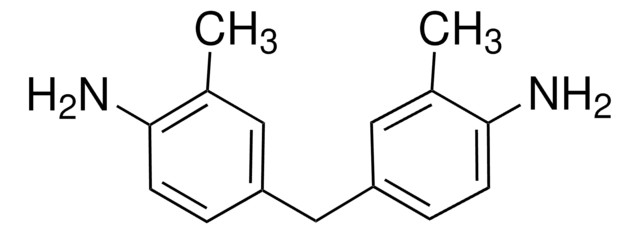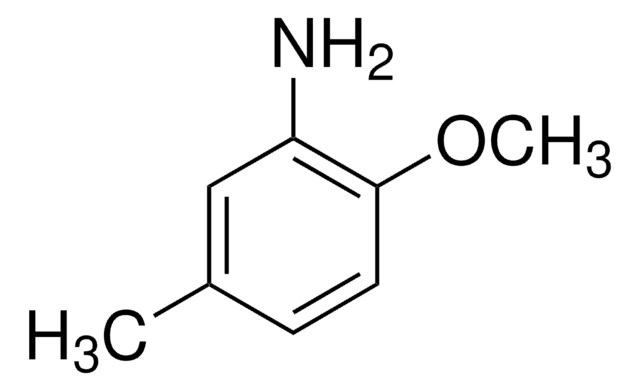66681
4,4′-Methylene-bis(2-chloroaniline)
analytical standard
Sinónimos:
2,2′-Dichloro-4,4′-methylenedianiline, 4,4′-Diamino-3,3′-dichlorodiphenylmethane
About This Item
Productos recomendados
grado
analytical standard
caducidad
limited shelf life, expiry date on the label
técnicas
HPLC: suitable
gas chromatography (GC): suitable
bp
202-214 °C/0.3 mmHg (lit.)
mp
102-107 °C (lit.)
aplicaciones
environmental
Formato
neat
cadena SMILES
Nc1ccc(Cc2ccc(N)c(Cl)c2)cc1Cl
InChI
1S/C13H12Cl2N2/c14-10-6-8(1-3-12(10)16)5-9-2-4-13(17)11(15)7-9/h1-4,6-7H,5,16-17H2
Clave InChI
IBOFVQJTBBUKMU-UHFFFAOYSA-N
¿Está buscando productos similares? Visita Guía de comparación de productos
Descripción general
Aplicación
- Urine samples by high performance liquid chromatography (HPLC).[2]
- Textile samples by HPLC coupled to tandem mass spectrometry (MS/MS) equipped with multiple reaction monitoring (MRM) mode of detection.[3]
- Plastic multilayer food packaging materials by LC-Orbitrap-full scan-high resolution mass spectrometry (HRMS) equipped with electrospray ionization (ESI) source.[4]
Otras notas
Productos recomendados
Palabra de señalización
Danger
Frases de peligro
Consejos de prudencia
Clasificaciones de peligro
Acute Tox. 4 Oral - Aquatic Acute 1 - Aquatic Chronic 1 - Carc. 1B - Muta. 2
Código de clase de almacenamiento
6.1C - Combustible acute toxic Cat.3 / toxic compounds or compounds which causing chronic effects
Clase de riesgo para el agua (WGK)
WGK 3
Punto de inflamabilidad (°F)
235.4 °F - closed cup
Punto de inflamabilidad (°C)
113 °C - closed cup
Equipo de protección personal
Eyeshields, Gloves, type P3 (EN 143) respirator cartridges
Elija entre una de las versiones más recientes:
¿Ya tiene este producto?
Encuentre la documentación para los productos que ha comprado recientemente en la Biblioteca de documentos.
Los clientes también vieron
Active Filters
Nuestro equipo de científicos tiene experiencia en todas las áreas de investigación: Ciencias de la vida, Ciencia de los materiales, Síntesis química, Cromatografía, Analítica y muchas otras.
Póngase en contacto con el Servicio técnico














